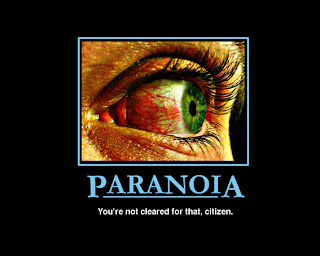

used a virtual reality task to induce negative social comparisons by manipulating height-a common marker for social rank -leading to increased paranoia when participants interacted with taller virtual avatars. Despite the obvious need for experimental work in this area, very few (if any) studies have addressed the causal factors that drive paranoia in genuine social interactions with others. However, results from epidemiological studies are correlative and cannot establish causal effects. Ĭollectively, these findings suggest that interacting with partners who have a higher social rank or are from a social out-group will increase concerns about personal harm and these effects will be exaggerated among people who have higher levels of pre-existing paranoia. In addition, low subjective social rank mediates the effect of childhood deprivation on later paranoid thinking. For example, a lower perceived social rank compared to others predicts paranoid ideation and psychosis-proneness. Increasing evidence also suggests that the subjective perception of one's relative status in the world is also an important predictor of paranoia. Additionally, perceived discrimination is associated with paranoia in ‘ultra-high risk for psychosis' individuals and mediates the association between deprivation and paranoia. Social adversity also manifests in terms of discrimination and exclusion, and people from minority ethnic backgrounds report higher levels of paranoia, an effect which is ameliorated as ethnic density increases. Paranoia is more common in people with low socioeconomic status, including those who live in poverty. Research on environmental predictors has consistently implicated adverse social conditions in promoting paranoid thinking, with those at the bottom of the social ladder being most affected.

Clearly, paranoia is an important social and clinical concern, although the causal factors underpinning variation in paranoid ideation are still not fully understood.īoth genetic and environmental components contribute to paranoia. Here, we distinguish between paranoid attributions (the attribution of harmful intent, which may or may not be accurate), paranoid ideation (the extent of paranoid thinking, which may include accurate attributions of intent but which is known to increasingly correlate with over-estimate of social threat as intensity increases ) and paranoid delusions, where delusions have a clear persecutory theme. Nevertheless, humans show striking variation in the tendency to attribute harmful intent to others and this is present as a continuum in the population, varying in accuracy and ranging in content from increased socio-evaluative concerns to frank paranoid delusions. Social threat detection mechanisms should be sensitive to the harms that can be imposed by conspecifics, including aggressive attacks, ostracism, social exclusion, reputation damage and other forms of harm that have potential negative consequences for reproductive success and/or survival. We conclude social threat in the form of low social status and out-group status affects paranoid attributions, but ongoing paranoia represents a lowered threshold for detecting social threat rather than an impaired reactivity to it. Pre-existing paranoia predicted a general increase in harmful intent attribution, but there was no interaction with either type of social threat: highly paranoid people showed the same magnitude of increase as non-paranoid people, although from a higher baseline. Interacting with someone from a higher social rank or a political out-group led to an increase in paranoid attributions of harmful intent for ambiguous actions. We examined whether relative social status and perceived group affiliation, respectively, affect live paranoid thinking using two large- N ( N = 2030), pre-registered experiments. Epidemiological models suggest that psychosis risk is associated with low social rank and minority status, but the causal effects of status and group affiliation on paranoid thinking remain unclear. Paranoia is the most common positive symptom of psychosis but is also present to varying degrees in the general population. The ability to attribute intentions to others is a hallmark of human social cognition but is altered in paranoia.


 0 kommentar(er)
0 kommentar(er)
